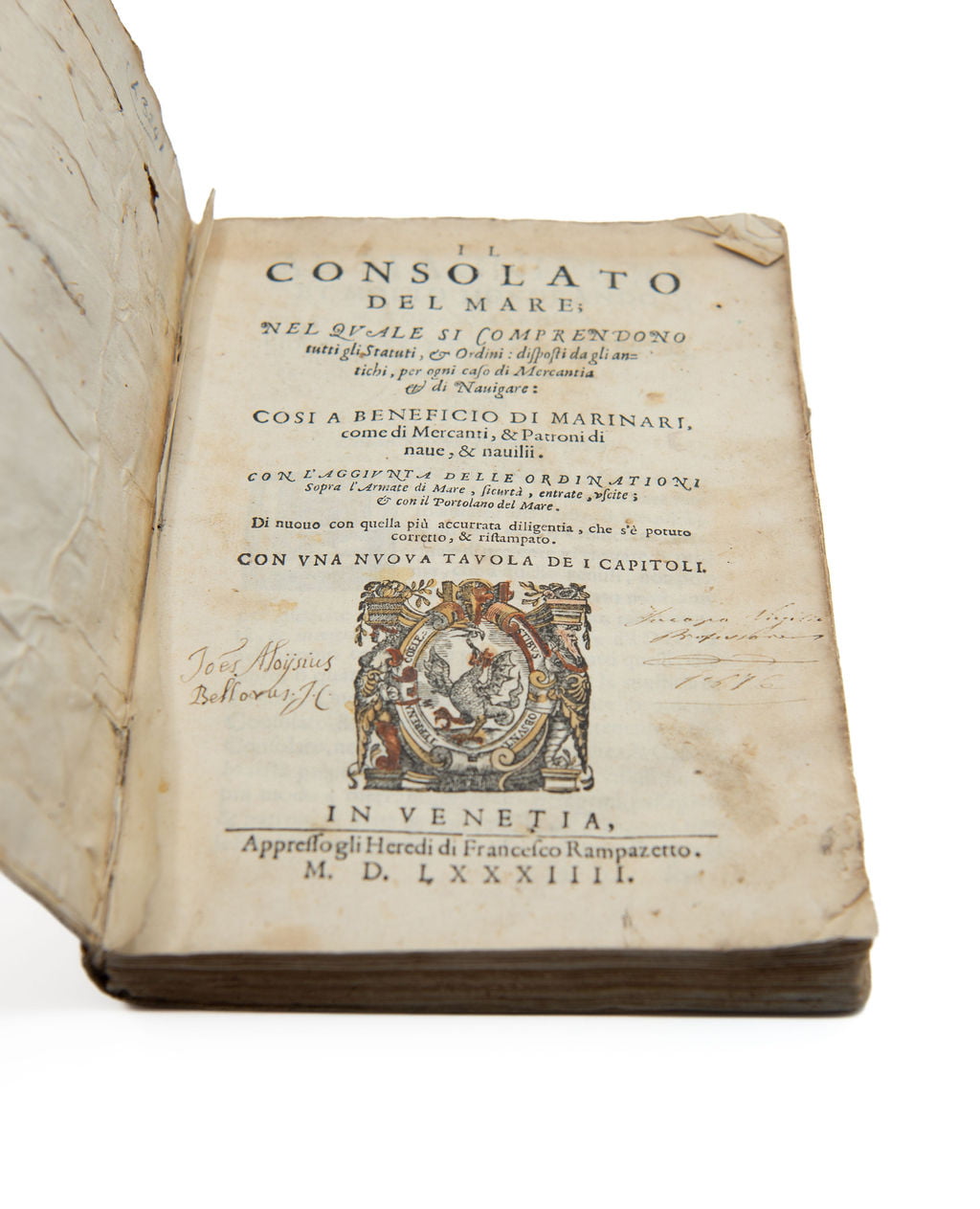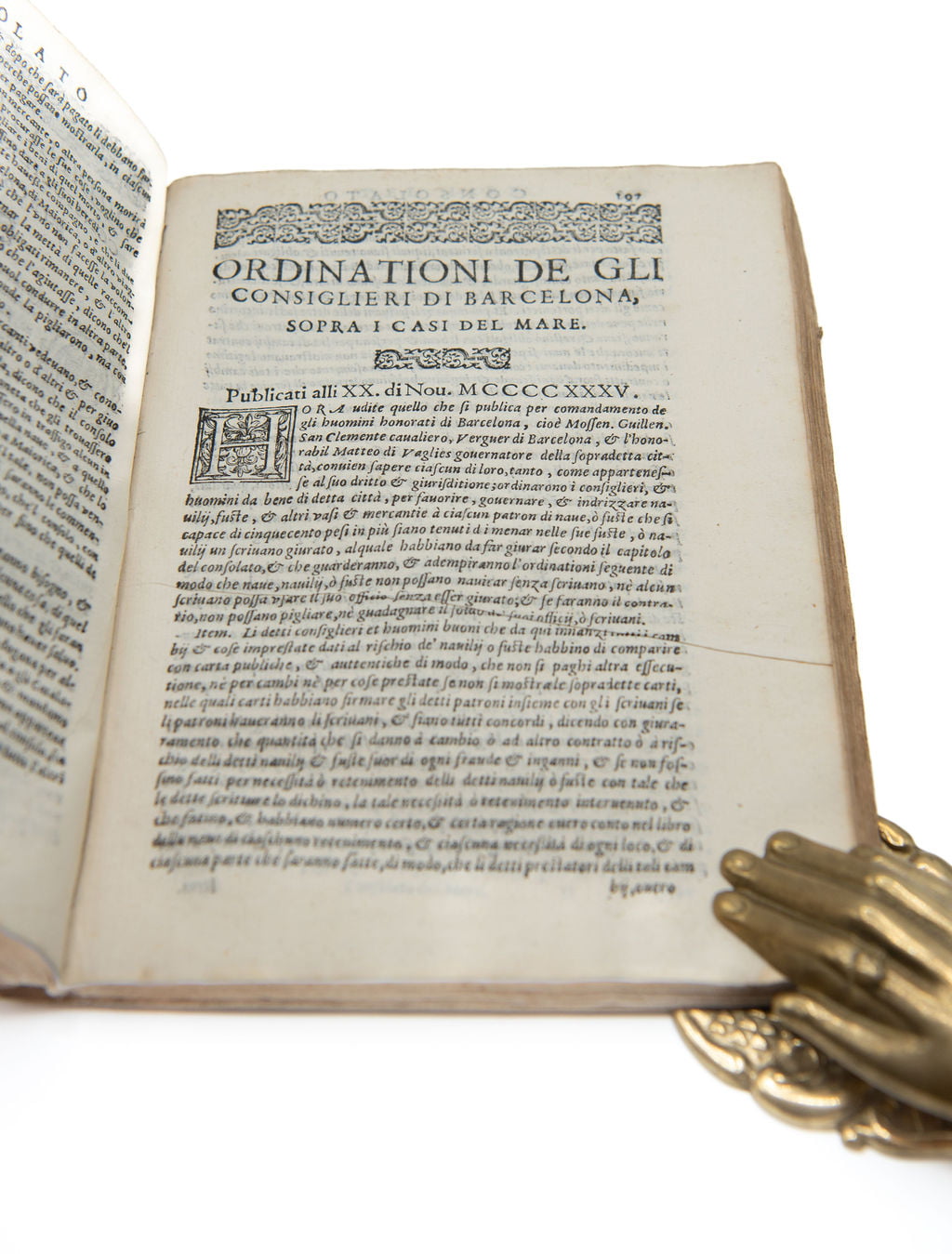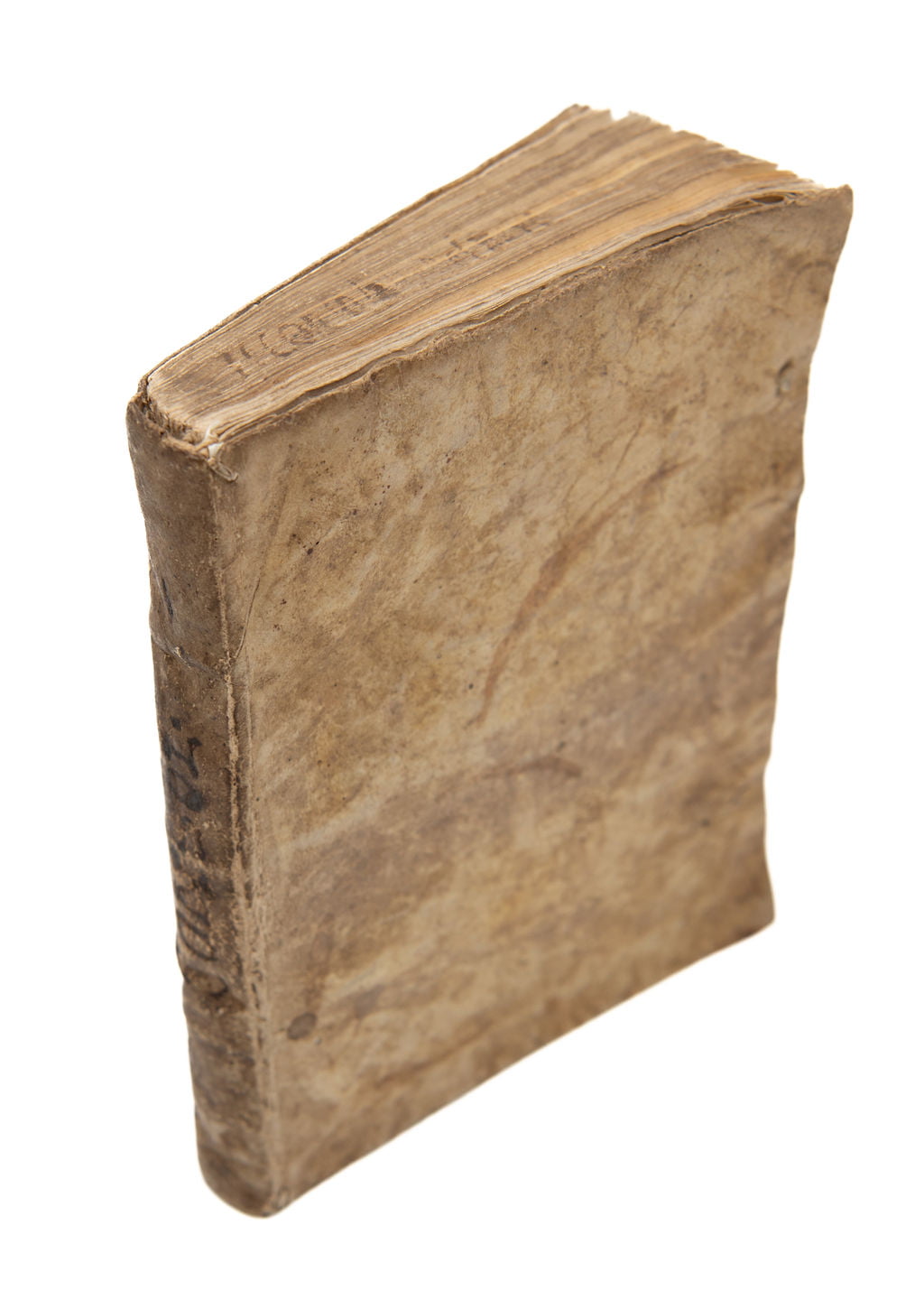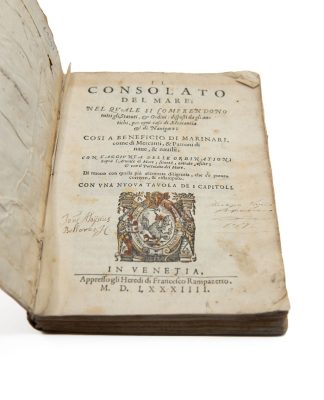[ARAGON.]
INTERNATIONAL MARITIME LAW
Il consolato del mare [with] Il portolano del mare.
Venice, appresso haer. Francesco I Rampazetto, 1584£2,750.00
4to. 2 works in 1, each with separate t-p, pp. (xvi) 230, (iv) 38. Italic letter, little Roman. Woodcut printer’s device to t-ps, decorated initials and ornaments, first printer’s device and initial in period colouring. Minor age yellowing, upper edges a bit dusty, light oil stain toward margin on a few ll., few ll. slightly browned, small stain at upper gutter of last two gatherings, t-p and verso of last a bit soiled. A good copy in contemporary vellum, traces of ties, title inked to spine, C16 autograph ‘Tomaso Renbado’ to front pastedown and rear spine lining stub, C17 autographs ‘Joannes Aloysius Bellorus JC’ and ‘Jacopo Virgilio (?) 1876’ to t-p, annotation in Virgilio’s hand to blank margin of a3, contemporary erased ex-libris with curse on book thieves ‘Questo libro è di Tomaso Renbado chi lo piglierà caro la pagherà’ to verso of last.
A good copy of the anonymous Italian translation of the most important early modern collection of international maritime laws. First printed in Barcelona in 1482-84, on the basis of a much older legal tradition originating in Barcelona, Majorca and Valencia, ‘Il consolato del mare’ contained all existing maritime regulations from Greek, Roman and medieval European statutes. Though based on the practice of the Aragon authorities, it was also gradually adapted to local needs when circulating outside the Iberic peninsula. The earliest translations, of unknown authorship, were Italian, first printed in Rome in 1519. The dedication of this edition is signed by Giovanni Battista Pederzano, a Venetian printer and the financer of previous editions of the ‘Consolato’, the text of which was retained in the following (Tonelli, ‘Sotto il segno’, 91-92). They also retained the original structure: an initial section on the appointment, function and workings of maritime authorities (e.g., the appointment of consuls and judges, sentences, appeals, litigation expense), followed by received ‘good customs of the sea’ (e.g., mariners’ wages, what to do if a mariner dies on board, how going to a dangerous place is not part of his duties), including the relationship between maritime businesses and private merchants (e.g., how to avoid or resolve damage of goods during transportation). A special case is that of armed ships, which have a dedicated section. In addition to shorter examinations of maritime regulations of Aragon, including customs, there is a most important one on maritime insurance on ships and cargo (e.g., goods purchased beyond Gibraltar and destined to Flanders or Sardinia and Sicily cannot be insured). This copy comes with the second edition of ‘Il portolano del mare’, with a separate t-p but rarely found individually, discussing in detail the location and distance in relation to Venice and one another of all ports of the East and West. This legal corpus, ‘thanks to its efficient treatment of maritime questions and for its reliance on the enterprising Catalan navy, became eventually…of common use in most of the Mediterranean’; in the C16, it was ‘the reference text on maritime regulations’ (Tanzini, ‘Prime edizioni’, 965-66).
Jacopo Virgilio (fl. mid-C19) was an economist very close to important Genoese shipping companies, and the author of several works on Italian history.
Not in BM STC It. or Brunet. L. Tanzini, ‘Le prime edizioni a stampa in italiano del Libro del Consolato del Mare’, in Itinerando, ed. R. Coroneo (Cagliari, 2015), 965-78; G. Tonelli, ‘Giovan Battista Pederzano editore-libraio nella Venezia del Cinquecento’, La bibliofilia 114 (2012), 71-132.In stock





